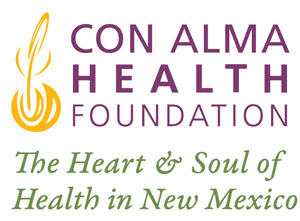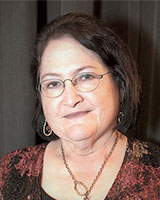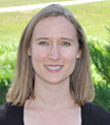Jan 13, 2021
Con Alma Health Foundation: Health Equity and COVID Relief
Q&A with Dolores E. Roybal, executive director of Con Alma Health Foundation
by Allee Mead
The first of four articles in the series During Pandemic, Rural Health Foundations Provide Financial Support, Technical Assistance, and Other Services
Overview of Con Alma's COVID-Related
Activities
The Con Alma Health Foundation:
- Partnered with local and national funders to award almost $2 million in grants for COVID relief
- Partnered with nonprofit organizations for a statewide emergency cash assistance program for immigrant workers and low-income families
- Created an advisory committee of immigrant-led, immigrant-serving organizations so Con Alma can better address barriers to access to services
What is your foundation doing to support rural communities during the pandemic?

Con Alma's mission is very much aligned in being aware of and addressing health rights and needs of the culturally and demographically diverse peoples and communities of New Mexico. What that means is that we have a focus on rural areas and communities of color from a health equity framework.
As a health equity foundation, we are a statewide funder and have a big interest in working with underserved populations and helping to address gaps in services and needs. When COVID-19 hit our state and country and the world, because we're a private foundation we were able to pivot very quickly in terms of expanding our role ― which primarily is addressing health equity issues from a systems change perspective ― and we quickly moved to both COVID relief and recovery.
We want to both provide immediate relief in terms of PPE (personal protective equipment), emergency food assistance, rental housing assistance, and cash relief through a variety of different programs, but we also want to make sure that we look at those systems changes, those structural inequities in our rural communities and our communities of color.
And that's an important phrase because, although we have been able to award nearly $2 million in grants this year to nonprofits around the state of New Mexico for COVID relief, it is also with the eye of recovery. We want to both provide immediate relief in terms of PPE (personal protective equipment), emergency food assistance, rental housing assistance, and cash relief through a variety of different programs, but we also want to make sure that we look at those systems changes, those structural inequities in our rural communities and our communities of color. New Mexico has a large percentage of people of color. We're nearly 50% Hispanic, around 11% Native American, and around 3% African American and other populations of color, including Asian American.
Con Alma Health Foundation was well-positioned to respond to COVID both in terms of the rapid relief and the recovery. And I'd like to acknowledge that we have not done this on our own: We have partnered with both national and local funders to provide these relief programs. For example, we received a $1 million grant from the Robert Wood Johnson Foundation for COVID relief. We also received a $500,000 grant from the W.K. Kellogg Foundation for COVID relief, although the Kellogg grant is focused more on COVID relief for immigrant communities. That $500,000 Kellogg grant included a $500,000 match, which we are close to completing with the assistance of 14 other funders who have contributed because they wanted to show their support for immigrant communities in the state.
To give you an example, we partnered with some of our nonprofit organizations in support of a statewide emergency cash assistance program that would support not just immigrant workers but also families who have low income. That's just one example of the type of grant making that we did in addition to some of the other immediate relief assistance for stipends and for zero-interest loans for basic means such as food, potable water, PPE, housing and utilities assistance, and so forth.
What additional work is your foundation involved with?
We have also pulled together an advisory committee of immigrant-led, immigrant-serving organizations so that they can work together more closely in terms of efforts to address barriers to access to services. Many immigrants in New Mexico are ineligible to apply for state or federal relief.
Con Alma as a grant maker is not prescriptive. We really support communities to define what they feel are the needs or issues and what they feel are the solutions. And what we do is match our resources with community needs. That's a really important point because not all funders take that approach. Some funders are more prescriptive than others, and we feel very strongly that the community, those folks who are most impacted, are the ones in the best position to decide what the need or issue is and what the community solutions are.
…we feel very strongly that the community, those folks who are most impacted, are the ones in the best position to decide what the need or issue is and what the community solutions are.
We also have that same kind of shared leadership model for the foundation. In addition to a statewide traditional governance fiduciary board, we also have a statewide community advisory committee, or CAC for short. All of our committees, for example, have representatives from both the board and from the CAC, including our grant making, our finance committee, and nominating committee. We always lead with community because the community is us, right? I'm from the community. I'm a generational resident Hispanic from New Mexico. And when we do our grant making, we always look at or apply a number of lenses. One of the lenses, of course, is the demographics. We always make sure that we're getting funds out to all parts of the state, particularly the smaller, rural communities.
Another aspect that we feel is very important is collaboration. For example, we have been a part of the Rural Health Public-Private Partnership with the Federal Office of Rural Health Policy and some of our other philanthropic partners like Grantmakers in Health. That kind of public-private collaboration is critical to the work we do. We also are consistent in terms of having a multi-sector collaborative approach. What that means is it's the example of a three-legged table where one leg is governmental, one is the nonprofit sector that includes both the nonprofit organizations and philanthropy, and the third leg includes the business sector. It takes all three sectors to support this table of communities.
Because we're a private foundation, we can pivot. We're nimble; we can respond quickly.
We always have that kind of approach and have very much appreciated our involvement with these types of public-private collaborations, not just because it takes all three sectors, but because we all have a different role. Because we're a private foundation, we can pivot. We're nimble; we can respond quickly. We're not like government that's a big ship that takes a lot more time to turn. So this multi-sector collaboration, I think, has made us even more impactful.
Any final thoughts regarding the future direction of your work?
…that is part of what health equity is to me, going beyond the health disparities and looking at why there are these disparities among specific populations, such as rural communities.
In order for us to really move forward, we have to concentrate and pay attention to both COVID relief and recovery. An example of long-term recovery is the broadband issue. COVID-19 really brought that issue to the forefront for many of us, particularly in a state like New Mexico that is largely rural. I call it a digital divide where we really have inadequate broadband, and it affects our health, telehealth, our education, remote working ― all aspects. And it's resulting in problems that may not have surfaced as vividly before, such as mental health issues, teens and elders suffering from social isolation, access to healthcare, and even telehealth if people don't have that connectivity. So that's an example of a long-term structural issue that we're also working on simultaneously as part of this pandemic. And that is part of what health equity is to me, going beyond the health disparities and looking at why there are these disparities among specific populations, such as rural communities. It's asking that "Why?" question and, as importantly, "What can we do to address it?"
Opinions expressed are those of the interviewee and do not necessarily reflect the views of the Rural Health Information Hub.

